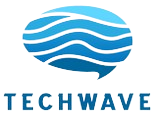Understanding the Importance of Automated Content Monitoring
In today’s rapidly evolving digital landscape, maintaining awareness of content changes across websites has become a critical necessity for businesses, researchers, and digital marketers. Automated site monitoring for content updates represents a sophisticated approach to tracking modifications, ensuring compliance, and staying ahead of competitive intelligence.
The traditional method of manually checking websites for updates is not only time-consuming but also prone to human error. With thousands of pages potentially requiring monitoring, automation becomes the only viable solution for comprehensive oversight.
Core Benefits of Implementing Automated Monitoring Systems
Professional website administrators recognize several compelling advantages when implementing automated content monitoring solutions:
- Real-time notifications: Immediate alerts when content changes occur
- Comprehensive coverage: Monitor multiple websites simultaneously
- Historical tracking: Maintain detailed records of all modifications
- Competitive intelligence: Track competitor website changes
- Compliance monitoring: Ensure regulatory requirements are met
- SEO optimization: Monitor content changes that might affect search rankings
Essential Components of Effective Monitoring Systems
Change Detection Algorithms
Modern monitoring systems utilize sophisticated algorithms to identify various types of content modifications. These systems can detect textual changes, image updates, structural modifications, and even subtle alterations in metadata. The most advanced solutions employ machine learning techniques to distinguish between significant updates and minor formatting adjustments.
Notification Mechanisms
Effective monitoring requires robust notification systems that can deliver alerts through multiple channels. Email notifications remain popular, but modern solutions also support SMS alerts, webhook integrations, and dashboard notifications. The key is configuring appropriate thresholds to avoid notification fatigue while ensuring critical changes are communicated promptly.
Data Storage and Analysis
Comprehensive monitoring generates substantial amounts of data that must be stored, organized, and analyzed effectively. Historical data provides valuable insights into content patterns, update frequencies, and trends that can inform strategic decision-making.
Step-by-Step Implementation Guide
Phase 1: Requirements Assessment
Before implementing any monitoring solution, conduct a thorough assessment of your specific requirements. Consider the following factors:
- Number of websites to monitor
- Types of content requiring surveillance
- Frequency of monitoring needed
- Budget constraints and resource availability
- Integration requirements with existing systems
Phase 2: Tool Selection and Configuration
Several categories of tools are available for automated content monitoring, each with distinct advantages and limitations. Web scraping tools offer maximum customization but require technical expertise. Browser automation frameworks provide excellent accuracy but consume more resources. API-based solutions deliver efficiency but depend on third-party service availability.
Popular monitoring tools include Visualping for visual changes, Distill for text modifications, and custom solutions built with Python libraries like Beautiful Soup or Selenium. Enterprise solutions such as Competitor Monitor and Klenty offer comprehensive features for large-scale operations.
Phase 3: Monitoring Configuration
Proper configuration determines the effectiveness of your monitoring system. Establish clear parameters for what constitutes a significant change worthy of notification. Configure monitoring intervals based on the expected update frequency of target websites. Set up appropriate filters to exclude irrelevant changes such as advertisements or timestamps.
Phase 4: Testing and Optimization
Thorough testing ensures your monitoring system functions correctly before full deployment. Create test scenarios with known changes to verify detection accuracy. Monitor system performance to identify potential bottlenecks or resource constraints. Continuously refine configuration settings based on initial results and user feedback.
Advanced Techniques for Professional Implementation
Machine Learning Integration
Sophisticated monitoring systems leverage machine learning algorithms to improve detection accuracy and reduce false positives. These systems can learn to distinguish between meaningful content updates and insignificant changes, such as dynamic timestamps or rotating advertisements.
API Integration and Webhooks
Modern monitoring solutions offer extensive integration capabilities through APIs and webhooks. These features enable seamless connection with existing business systems, allowing for automated responses to detected changes. For example, content changes might trigger workflow automation, update customer relationship management systems, or initiate marketing campaigns.
Multi-layered Monitoring Strategies
Professional implementations often employ multiple monitoring approaches simultaneously. Visual monitoring detects layout changes, textual monitoring identifies content modifications, and structural monitoring reveals technical alterations. This comprehensive approach ensures no significant changes escape detection.
Common Challenges and Solutions
Dynamic Content and JavaScript-Heavy Sites
Modern websites frequently utilize dynamic content loading and complex JavaScript frameworks, presenting challenges for traditional monitoring approaches. Solutions include using headless browsers for rendering, implementing delays to allow content loading, and focusing on specific DOM elements rather than entire pages.
Rate Limiting and Anti-Bot Measures
Many websites implement measures to prevent automated access, including rate limiting, CAPTCHA systems, and IP blocking. Successful monitoring requires implementing appropriate delays between requests, rotating IP addresses when necessary, and respecting robots.txt guidelines.
Scalability Considerations
As monitoring requirements grow, system scalability becomes crucial. Cloud-based solutions offer elastic scaling capabilities, while distributed monitoring architectures can handle increased loads. Consider implementing queue systems for managing monitoring tasks and load balancing for distributing requests.
Best Practices for Sustainable Monitoring
Ethical Considerations
Responsible monitoring practices respect website terms of service and implement reasonable request frequencies. Avoid overwhelming target servers with excessive requests, and always comply with legal requirements regarding data collection and privacy.
Maintenance and Updates
Regular maintenance ensures continued monitoring effectiveness. Update monitoring scripts to accommodate website changes, review and adjust notification thresholds, and periodically audit monitored URLs for relevance and accuracy.
Documentation and Knowledge Management
Comprehensive documentation facilitates system maintenance and knowledge transfer. Document monitoring configurations, maintain change logs, and create troubleshooting guides for common issues.
Future Trends in Content Monitoring
The field of automated content monitoring continues evolving with technological advances. Artificial intelligence integration promises more sophisticated change detection and analysis capabilities. Real-time monitoring technologies are becoming more accessible, enabling instant notifications for critical updates.
Cloud-native monitoring solutions offer improved scalability and reduced infrastructure requirements. Integration with content management systems and marketing automation platforms creates more comprehensive digital ecosystem monitoring.
Measuring Success and ROI
Effective monitoring implementation requires establishing clear success metrics. Track detection accuracy, response times, and false positive rates to assess system performance. Measure business impact through improved competitive intelligence, faster response to market changes, and enhanced compliance monitoring.
Calculate return on investment by comparing automation costs with manual monitoring expenses. Consider time savings, improved accuracy, and strategic advantages gained through timely information access.
Conclusion
Automated site monitoring for content updates represents a critical capability for modern digital operations. Successful implementation requires careful planning, appropriate tool selection, and ongoing optimization. By following established best practices and staying current with technological developments, organizations can build robust monitoring systems that provide valuable competitive intelligence and operational insights.
The investment in automated monitoring pays dividends through improved efficiency, enhanced competitive awareness, and better strategic decision-making capabilities. As digital landscapes continue evolving, those who master automated content monitoring will maintain significant advantages in their respective markets.

